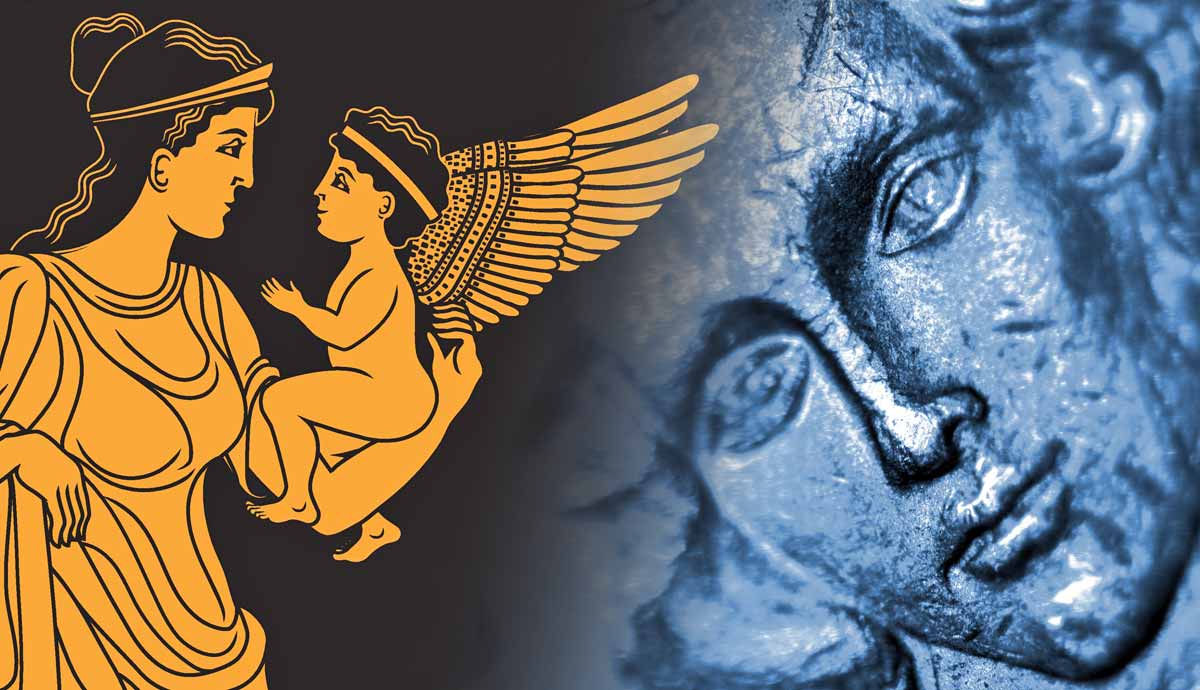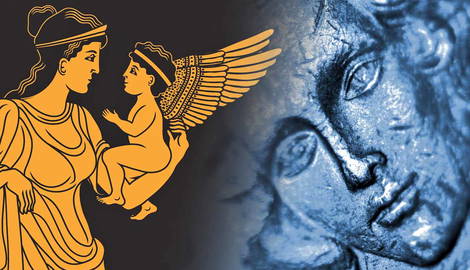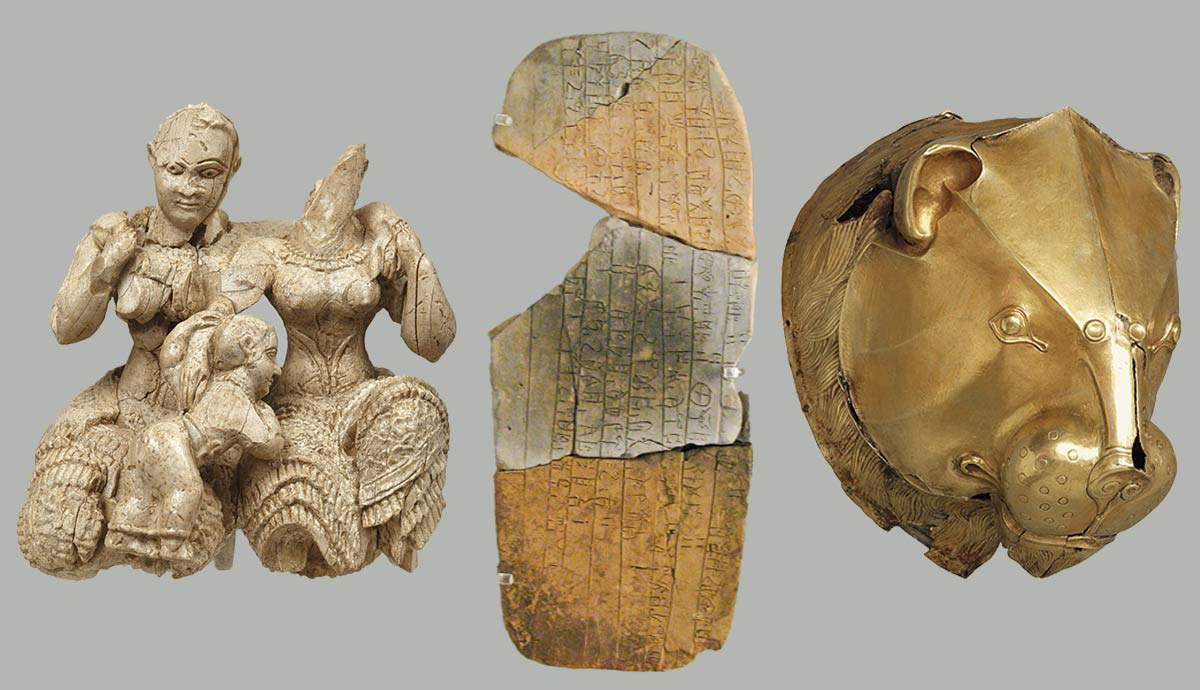
Aphrodite is known as the Greek goddess of love, beauty, and sex. Her stories in Greek mythology famously revolve around her steamy love affairs, meddlesome interference in the lives of mortals, and spiteful petty wrath. However, Aphrodite’s role in the ancient world was much more significant and complex and she was one of the most widely worshiped and popular deities. She was not just the source of romantic chaos or a sex-starved goddess, but a multifaceted and powerful figure. In addition to love, Aphrodite was a goddess of desire, sex, beauty, fertility, sailing, civil unity, and, surprisingly, even warfare.
The Origins of a Goddess

The best place to start is at the beginning. One particular point that makes Aphrodite unique in comparison to the rest of the gods is her origins. While Aphrodite is described as the daughter of Zeus and Dione in The Iliad, Hesiod in his Theogony describes her as a Titan. It states that when the Titan Cronus usurped his father Uranus, he cut off his genitals and threw them into the sea from which sprung Aphrodite, whose name aphros means “of the sea foam.”
This technically makes her the eldest of the Olympian gods. In fact, the cult of Aphrodite predates the Greeks and the Romans and is said to have been imported from the Near East, heavily influenced by the cult of Ishtar. Ishtar was the Mesopotamian goddess of love and sex, and coincidentally, she also had militaristic and violent aspects to her nature and worship.
The breadth of Aphrodite’s powers is truly astonishing. In Rome, as Venus, she became the patron deity of Pompeii and a goddess of the Roman Empire. Her image was present in multiple shrines throughout the ancient world dedicated to her various characteristics: from assistance in battle and civic order to marriage and fertility.
Her cult was so widespread and her importance so notable that two important Roman figures, Julius Caesar and Emperor Augustus, forged ancestral ties to her, claiming that they were descended from her son, Aeneas, the mythical hero of Troy. Although Roman Venus existed independently of the Greek Aphrodite, her worship does shed light on how the goddess changed and evolved throughout time.
The Many Faces of the Gods

While we tend to think of the gods within their famous labels such as “love,” “war,” “wisdom,” in reality, they were much more complex. It seems like a strange concept to grasp, but the Greeks did not refer to their gods as “the god/goddess of–.” Instead, states Gabriela Pironti in Rethinking Aphrodite as a Goddess at Work, the Greeks recognized their deities as polyvalent, appearing in multiple forms. In Greek polytheistic religion, a god is not necessarily a “person” but a “divine power” with many facets that preside over different domains or areas of human experience. This can include sex, birth, marriage, the forces of nature, wealth, and death.
As such, the Greeks created different representations of the gods’ many faces and designated them several epithets (descriptive titles). These titles work like “last names” and highlight a specific quality, attribute, or function of the gods. The Aphrodite of Sparta, the Aphrodite of Athens, and Homer’s Aphrodite are thus, not identical to each other but represent different parts of the same goddess. Many of these epithets point to a local form of worship or version of the goddess, such as Aphrodite Cypris or “Aphrodite of Cyprus,” which was her birthplace and principal seat of worship. The diversity of Aphrodite’s powers meant that one city could have multiple shrines dedicated to several specific aspects of the goddess.
Not Just the Goddess of Love

Aphrodite’s cult and worship are so widespread that the goddess has over 30 epithets. She has some of the most varied and universal aspects of all the Greek deities and presides over a little bit of everything. The ancient Greeks did not see her simply as the incarnation of love and beauty, but attributed to her the power of awakening eros (passion and desire) and mixis, the ability to “mix” together living beings.
Additionally, her association with other deities such as Ares, the god of war, also influenced her image. As a result, her domain often included and overlapped with male-dominated areas such as politics, military characteristics, war, virility, vital strength, and violence. Her marine birth from the castrated genitals of Uranus gave her dominion over the sea, sailing, and peaceful passage for sailors. This did not interfere with her interaction with the realms of marriage, beauty, and love, or her ability to create harmony and unity.
For instance, the eponymous city of Aphrodisias (in modern-day Turkiye) held her unique cult image Aphrodite of Aphrodisias, who was venerated as a local fertility goddess. This image of Aphrodite defined the city’s identity and has been found from Anatolia and Rome to the Levant. The name of the city is proof of just how important this goddess was in antiquity.
Aphrodite was also said to have granted Pandora grace and beauty, and Penelope and Kassandra were both described as being as beautiful as “golden Aphrodite.” She also presided over merriment, peace, and childbirth. It’s safe to say that she is not just the goddess of love, she is so much more. So let’s take a look at two particularly fascinating yet overlooked aspects of this popular goddess.
Armed Aphrodite

When it comes to the many faces of Aphrodite, possibly the most confusing and incredible one is her connection to the world of warfare. Surprisingly, the idea of a warrior Aphrodite was not unusual in antiquity. In fact, Pironti states that many cults existed that venerated her participation on the battlefield. Not only was she worshiped as a warrior goddess in Kythera and Sparta, but in Corinth she was revered as one of the city’s protector deities and had three dedicated temples. Small bronze statuettes made by the Etruscans from the 6th century BCE depict her wearing a helmet and with her arm raised as if holding a spear and shield.
In Aphrodite Enoplin, Stephanie Budin discusses the goddess’ warlike persona and states that she was also worshiped in Cyprus, Asia Minor, Syria, and Argo, where she bore the epithet Nikephoros (“victory bearer”). Aphrodite’s war-like epithets also include Areia (“of Ares” or “warlike”), Stratêgis (“of the commanders”), Strateia (“of the army”), and Hegemonê (“leader”). Her connection to Ares as his divine consort also meant that the military sphere and war-like qualities had a place in her realm of influence, and the two deities were often worshiped together. Not only was Aphrodite worshiped as a warrior goddess, but her peaceful, tender aspect was powerful enough to disarm Ares. War himself was powerless against her charms.

So, beyond Ares, how else is Aphrodite connected to war? As noted, her core characteristic dealt with arousing eros. Eros is not just associated with romantic passion, but passion of any kind. This is a powerful, oftentimes dangerous quality, as desire and passion can have negative consequences, as can be seen in Aphrodite’s numerous wrathful myths. Unions are not always peaceful and contain the possibility of conflict and violence. Sex and battle can even be described as different forms of bodies meeting, mingling, and uniting, therefore mixis. However, in times of war, Budin states the women of Corinth prayed to Aphrodite Areia to inspire in their men the eros of battle and victory. In Sparta, two temples were dedicated to the Armed Aphrodite.
In the first century BCE, Antipater of Sidon wrote:
“Even Kypris [[Aphrodite]] is Spartan. She is not dressed as in other towns in soft garments, but in full force, she has a helmet instead of a veil, instead of golden branches a spear shaft. For it is not proper for her to be without arms…”
Statues and votive paintings of Armed Aphrodite have appeared across the Greek and Roman world, from domestic settings and religious sanctuaries to civic and public buildings. A sculpture of Aphrodite Areia found in ancient Epidaurus combines the sexual nature of the goddess with her militaristic symbolism. The sculpture originally depicted her holding a sword, now lost, and a scabbard crosses her chest.
Similarly, an intaglio ring created in 200 BCE also depicts an Armed Aphrodite, nude and holding a shield and a spear. It is also important to remember that violence is present in Aphrodite’s myth: from the violent act that led to her birth to her part in triggering the Trojan War. While she was not overtly active in combat, she persuaded Paris to choose her among the other goddesses (Hera and Athena) as the fairest of all, promising him the love of Helen of Sparta. In doing so, she launched a war that would last for over a decade.

Aphrodite actually favored the Trojans, especially her lover Anchises, their son Aeneas, and of course, the lovers Helen and Paris. During the war, she granted her son Aeneas a spectacular set of armor for his protection. At one point she even shielded him and was wounded by Diomedes, who later became the King of Argos. In Homer’s Iliad, Zeus tells her to pay more attention to her matrimonial duties after she was wounded on the battlefield. In her article, Pironti interprets this passage as Zeus, allied with the Greeks alongside Athena, seeking to keep Aphrodite out of the way. Aeneas would survive the Trojan War and eventually become one of Rome’s mythical founders alongside the twins, Romulus and Remus. Thus, the Julio-Claudians established a genealogical claim to her and honored her as Venus Genetrix, “Foundress of the Family.”
Maritime Aphrodite

Aphrodite also had a strong connection to the sea and maritime affairs. While her connection to the sea is mostly attributed to her marine birth, her ability to bring about unity was also perceived as being able to grant smooth sailing. She was especially venerated in many major harbors and ports throughout the Mediterranean such as Athens, Corinth, Naukratis, and Syracuse.
In her Oxford bibliographic contribution, Monica Cyrano cites Aphrodite’s numerous seafaring titles. These include Anadyomenē, the goddess who “rises up from the sea,” Pontia and Pelagia, “she of the sea,” Euploia, “she of smooth sailing,” and Limenia, “she of the harbor.” Aphrodite’s sanctuary at the Etruscan port of Gravisca demonstrates her significance to merchants and travelers.
Her domains of sex and the sea are not mutually exclusive. As noted, the seafoam she rose from was caused by the castrated genitals of her father Uranos. The sperm mixed with the flesh and waves to create the goddess out of the resulting seafoam. Given the carnal nature of her birth, it’s easy to see why she is so closely associated with sex and the sea.
This connection can also be seen in her attributes and symbols like the seashell and the dolphin. She is often depicted rising from the sea in art from antiquity to the Renaissance. She can also be seen riding a hippocampus or “sea goat” in several marine depictions. A Roman wall painting dating to the 1st century CE, from the appropriately named House of Venus Marina in Pompeii, shows her lying on a large shell, rising from the sea, adorned in beautiful jewelry. This shows that her connection to the ocean continued into her worship as Venus by the Romans.
Everywhere All At Once

With an array of diverse manifestations, Aphrodite was known to the Greeks by many names, characteristics, and stories. Aphrodite’s influence extended over all the elements on earth, the sea, and the vital forces of the cosmos, and is present in nearly every aspect of mortal life. She is a goddess of love who enters the battlefield. She was depicted armed with a shield and spear and venerated by the dominant powers of the ancient world. It is no surprise that she is among the most—if not the most—popular subjects in art from antiquity to the present day. Aphrodite and her many faces have been reproduced in marble and bronze sculptures, on drinking cups, oil lamps, drawings, paintings, architecture, jewelry, mirrors, and more.
In sculpture alone, she has over a dozen “types” including Venus Pudica, the Capitoline Venus, Venus de Milo, Venus Marina, and Aphrodite of Knidos. She was a goddess of adornment, eros, and sex, venerated by nearly every strata of society: free men, women, prostitutes, soldiers, poets, sailors, merchants, emperors, and magistrates. Thus, the goddess was known as Pandēmos, “she who belongs to all the people”. It is safe to say that this goddess was much much more than a pretty face.
Bibliography + Reading List
- Cyrino, Monica S. (2010), Aphrodite, Gods and Heroes of the Ancient World, New York and London: Routledge, ISBN 978-0-415-77523-6.
- Cyrino, Monica S. (2014), “Aphrodite,” in Oxford Bibliographies
- Budin, Stephanie L. (2010), “Aphrodite Enoplion”, in Smith, Amy C.; Pickup, Sadie (eds.), Brill’s Companion to Aphrodite, Brill’s Companions in Classical Studies, Leiden, The Netherlands: Brill Publishers, pp. 85–86, 96, 100, 102–03, 112, 123, 125, ISBN 978-9047444503.
- Pironti, Gabriela (2010), “Rethinking Aphrodite as a Goddess at Work,” in Smith, Amy C.; Pickup, Sadie (eds.), Brill’s Companion to Aphrodite, Brill’s Companions in Classical Studies, Leiden, The Netherlands: Brill Publishers, pp. 113-133, ISBN 978-9047444503.
- Homer, The Iliad, book 5, 363-415. Homer. The Iliad with an English Translation by A.T. Murray, Ph.D. in two volumes. Cambridge, MA., Harvard University Press; London, William Heinemann, Ltd. 1924. Perseus Tufts Database.
- Homeric Hymns, Hymn 6, “to Aphrodite.” Anonymous. The Homeric Hymns and Homerica with an English Translation by Hugh G. Evelyn-White. Homeric Hymns. Cambridge, MA., Harvard University Press; London, William Heinemann Ltd. 1914. Perseus Tufts Database.
- Hesiod, Theogony, Lines 173-206. Hesiod. The Homeric Hymns and Homerica with an English Translation by Hugh G. Evelyn-White. Theogony. Cambridge, MA., Harvard University Press; London, William Heinemann Ltd. 1914. Perseus Tufts Database.









